Thursday 18 September
Patria Private Equity Trust PLC ex-dividend date
PPHE Hotel Group Ltd ex-dividend date
Regional REIT Ltd ex-dividend date
Social Housing REIT PLC ex-dividend date
The European Smaller Cos Trust PLC ex-dividend date
Investment Trust Dividends
Thursday 18 September
Patria Private Equity Trust PLC ex-dividend date
PPHE Hotel Group Ltd ex-dividend date
Regional REIT Ltd ex-dividend date
Social Housing REIT PLC ex-dividend date
The European Smaller Cos Trust PLC ex-dividend date
Zaven Boyrazian crunches the numbers to show how much money investors need to start earning £5,000 passively using the FTSE 250 index.
Posted by Zaven Boyrazian, CFA
Published 15 September

When investing, your capital is at risk. The value of your investments can go down as well as up and you may get back less than you put in.Read More
The content of this article is provided for information purposes only and is not intended to be, nor does it constitute, any form of personal advice. Investments in a currency other than sterling are exposed to currency exchange risk. Currency exchange rates are constantly changing, which may affect the value of the investment in sterling terms. You could lose money in sterling even if the stock price rises in the currency of origin. Stocks listed on overseas exchanges may be subject to additional dealing and exchange rate charges, and may have other tax implications, and may not provide the same, or any, regulatory protection as in the UK.
The FTSE 250‘s predominantly known as the UK’s leading growth index. Yet, it’s also home to a wide range of generous dividend-paying stocks as well. In fact, right now, there are more than 60 stocks with a yield of 5% or more.
Obviously, not all of these passive income opportunities will turn out to be winning investments. But every once in a while, it’s possible to discover a hidden gem that other investors have overlooked.
Before you decide, please take a moment to review this report first. Despite ongoing uncertainties from Trump’s tariffs to global conflicts, Mark and his team believe many UK shares still trade at substantial discounts, offering savvy investors plenty of potential opportunities to learn about.
So for investors considering snapping up some FTSE 250 dividend stocks today, how much money do they need to invest to start earning a £5,000 passive income?
Right now, the FTSE 250 index as a whole offers a total average yield of 3.4% – slightly higher than the FTSE 100. That means any investor relying on index funds will need to have a total of £147,059. But for stock pickers, the capital requirements might be significantly less.
Take NextEnergy Solar (LSE:NESF) as a prime example to consider. The renewable energy enterprise currently has the largest yield in the index at 12.7%! At this rate of payout, the amount of capital needed to earn £5,000 passively drops to just £39,370. That’s still a pretty chunky lump sum, but it’s far quicker to build up with compounding compared to almost £150,000.
Yet, sadly, high yields aren’t guaranteed. And if NextEnergy can’t maintain this generous dividend scheme, buying shares today could lure investors into a trap that destroys wealth rather than creates it. With that in mind, let’s take a deeper dive into the FTSE 250 business.
When it comes to dividend sustainability, NextEnergy Solar has quite a favourable business model. The group owns and operates a diverse portfolio of solar farms based mainly in the UK. These assets generate clean electricity, which is sold to the energy grid, generating a recurring inflation-linked revenue stream.
Having said that, solar farms only generate electricity when the sun’s shining. So far in 2025, the weather’s been quite favourable, resulting in above-budget energy generation. But that’s not always the case, and it remains a perpetual risk that investors must consider.
Nevertheless, even with this constant fluctuation, management’s prudent approach to capital allocation has translated into 10 years of continuous dividend hikes. And looking at the latest operating update, the company’s aiming to maintain the current shareholder payout at 8.43p per share.
In other words, so long as there aren’t any unexpected surprises, today’s double-digit yield looks like it’s here to stay. But if that’s the case, why aren’t more investors capitalising on this passive income opportunity?
Investor sentiment surrounding renewable energy stocks in 2025 is pretty weak. Like many of its peers, NextEnergy Solar has a chunky 48.5% gearing ratio driven by a high debt burden and preference shares. And in a higher interest rate environment, that can be problematic.
So far, that’s still manageable. But with long-term forecasts pointing towards a downturn in energy prices, dividends may have to be sacrificed to keep its financial obligations under control. Therefore, this isn’t a FTSE 250 stock I’m rushing to buy right now. Instead, my focus is on other investing opportunities.
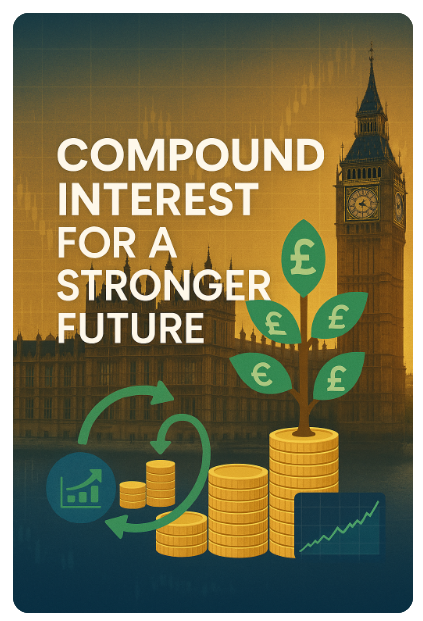
| Top funds, trusts and ETFs | 5-year performance average |
|---|---|
| Scottish Mortgage Investment Trust | 5% |
| AJ Bell Balanced | 6.6% |
| Fundsmith Equity Fund | 6.1% |
| AJ Bell Moderately Adventurous | 8.5% |
| AJ Bell Adventurous | 10.6% |
| City of London Investment Trust | 9.3% |
| JP Morgan Global Growth & Income | 14.5% |
| Fidelity Index World | 12.9% |
| iShares Core FTSE 100 | 13% |
| AJ Bell Global Growth | 10.4% |
| Polar Capital Technology Trust | 14.8% |
| GreenCoat UK Wind | 2.2% |
| BlackRock World Mining Investment Trust | 13.1% |
| Alliance Witan | 11.6% |
| iShares S&P 500 ETF | 14.6% |
| F&C Investment Trust | 12.8% |
| Murray International Trust | 15.3% |
| iShares Physical Metals/Physical Gold ETF | 12.5% |
| AJ Bell Moderately Cautious | 4.5% |
| Fidelity Global Special Situations | 10.7% |
Source: FE Fundinfo total return
Investment trusts were popular among this crowd. One of the advantages of the investment trust structure is that it can offer more consistent dividend payments to its investors, because it’s able to hold some money back during high performance years and pay it in a more even keel during low-performance years. This can help those in retirement who would like to have some sort of regular income through their investments.
Scottish Mortgage Investment Trust and City of London Investment Trust are both referred to as ‘dividend heroes’ by the Association of Investment Companies (AIC), meaning they have consistently increased their dividends for over 20 years in a row.
Like the SIPP investors under 66, AJ Bell’s multi asset range is a popular investment option for the older group. While investors over 66 did primarily opt for slightly lower-risk options, such as the balanced fund, interestingly they choose funds with higher return opportunities, like global growth, over the income fund.

| https://earthremediesspa.com/ earthremediesspa.comx Pursell62870@gmail.com 191.102.129.72 | Great blog! Do you have any helpful hints for aspiring writers? I’m planning to start my own site soon but I’m a little lost on everything. Would you propose starting with a free platform like WordPress or go for a paid option? There are so many options out there that I’m totally confused .. Any tips? Appreciate it! |
The blog uses Word Press through fasthosts, there is a free introductory offer.
The current charge is £8.20 per month, no coding experience necessary.
Current cash for re-investment £1,495.00
Cash to be received this month £662.00
2k to be invested into QYLP. The current plan is to reduce the risk into the QYLP trade by re-investing future dividends into a lower risk trade.

Every time you put on a trade on, you must ask yourself. What is the worst possible thing that can happen to this trade in between now and me being right. Is this realistic ? Am I lying to myself ? Take your worst case scenario and double it.
Gary Stevenson
If you want to buy a high yielding Trust/Etf but are concerned about the risk, one way of lowering the risk is to pair trade the purchase.
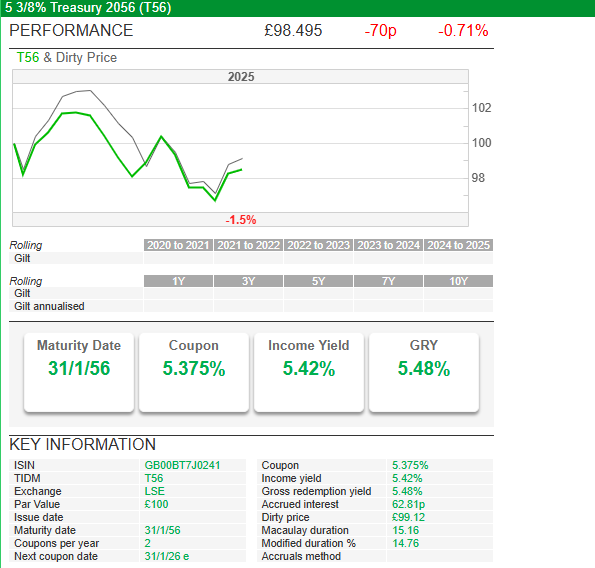
The income yield is 5.42%, the income is paid twice a year, better if held in a tax free account.
It’s likely that over the time period that you could make a capital loss but only if you sell and as you only want the income to re-invest it matters little. If/when interest rates rise above 5.42% you could simply re-invest your income into a money market account. To double your income in ten years the target is re-investing for a blended yield of 7% plus.

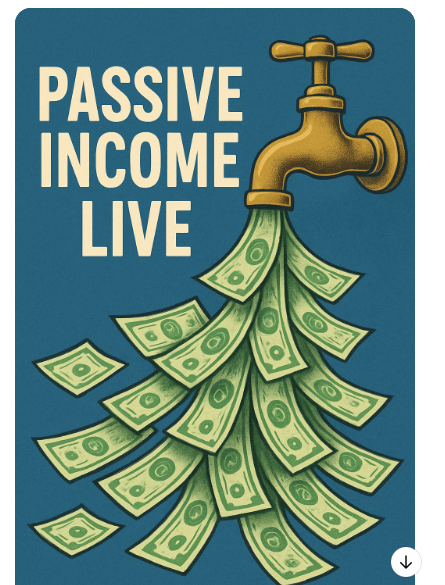
Brett Owens, Chief Investment Strategist
Updated: September 10, 2025
Last Friday’s jobs report confirmed what we contrarians have been discussing for months now—thanks to AI, employers no longer need to hire more employees to grow.
Bosses simply need to implement AI tools to grow their businesses. The machines are a managerial dream. Once trained they are, in many cases, better, faster and cheaper than people.
Robots always report for work. They will grind all the time. And they are never sick or hungover!
Two years ago, my current software company engaged about 15 contractors in various capacities. Today, thanks to AI, we have only two-and-a-half. Yet even with only one-sixth the “manpower,” sales are climbing, and the bottom line has never looked better!
This “growth without headcount” revolution is happening throughout the economy. The US added only 22,000 new jobs in August and 107,000 jobs over the last four months. Meanwhile, it’s estimated that 100,000 fresh gigs are needed every month to keep up with population growth—which means we are 70,000 short per month of that target.
Bad news for job seekers (such as new college grads) but bullish for business owners.
This is the reason that small businesses are increasingly cheerful. The rise of machines solves a tough business problem—hiring and managing employees. No wonder the Small Business Optimism Index just hit a five-month high.
Let’s talk about an 11% dividend that is directly benefiting.
FS Credit Opportunities (FSCO) is a small-business lender quietly cashing in on this generational shift. The team at FS Credit rewarded investors with another 5.1% dividend raise earlier this summer. FSCO now yields 11%, paid monthly!

The firm benefits from an uptick in M&A under Trump 2.0. As a business development company in a “fund wrapper,” FSCO presents us with the best of all possible worlds—a reliable income strategy via value-based lending that gets dished to us as a generous monthly dividend.
We were “early adopters” of FSCO in my Contrarian Income Report, and we have been rewarded with 24% gains in just 11 months. We bought the fund at a 10% discount to its net asset value, a deal that was “too good to be true” as this fund now trades at fair value. Still, it is tough to argue with a fair price for a secure 11% monthly dividend.
Small company bosses aren’t the only ones trimming their human payrolls. Big companies are also going big on AI. Microsoft (MSFT) laid off 15,000 employees a few months back. Yet Microsoft isn’t downsizing. It’s upsizing efficiency by rolling out robot-powered sales, marketing and support teams.

Meanwhile, if you need to get a hold of a person at Amazon (AMZN) about your latest package, good luck. CEO Andy Jassy openly acknowledged that Amazon’s workforce will shrink over the next few years. Today is likely “peak human headcount” for the online retailer because it has found a way to grow without hiring.
We are seeing these patterns all over the “Magnificent 7”— tech companies are eating their own AI dogfood to replace expensive humans with cheaper machines. Profits are booming.
Global X S&P 500 Covered Call ETF (XYLD) is a savvy dividend play on this megatrend. XYLD holds a substantial 40% tech allocation, capturing the automation-driven profitability boom.
XYLD implements a covered call strategy that buys stocks and then sells (“writes”) call options to other investors. XYLD owners earn income from the premiums collected, paid upfront.
It’s a lucrative payout boost: XYLD dishes a 9.7% dividend, payable each month. The fund’s showered us with 31% annualized gains since we added it to the CIR portfolio in April, and more profits are likely as the Mag 7 continues to impress.
So, we have booming corporate profits alongside a sleepy jobs market. The latter means the Federal Reserve will almost certainly cut short-term interest rates.
Long rates are on the way down, too. Partly as a reaction to unemployment numbers, but really thanks to major “help” from the US Treasury.
The Treasury is dusting off its bond buyback machine to keep a lid on long rates. Here’s how it works. The Treasury raises cash in the short end (by selling more lower-yielding bills, two years or less) and uses those funds to repurchase longer-dated notes and bonds (“retiring” their higher yields and higher cost to Treasury) in the secondary market.
It’s a recycling program for Uncle Sam’s outstanding debt. The effect of these Treasury buybacks? Even fewer long-duration bonds are available to investors.
Treasury Secretary Bessent doesn’t even have to announce a formal cap on the 10-year yield. He simply pulls supply out of the market, which causes long-dated yields to drift down (with more demand, Seller Sam can “name his price”—he doesn’t have to pay higher yields to attract lenders).
Result? The 10-year Treasury yield has dropped to 4% from 4.8% this year.
Treasury bond prices and interest rates have an inverse relationship. Thus, 11.3%-yielding iShares 20+ Year Treasury Bond BuyWrite Strategy ETF (TLTW) has a rock-solid floor beneath it.
TLTW buys the iShares 20+ Year Treasury Bond ETF (TLT) and then writes covered calls on its shares for extra income. There are many covered call funds for stocks, but TLTW is unique in using this strategy to boost bond yields. With the US Treasury having TLT’s back, TLTW’s assets are well supported while they generate its big monthly dividend.
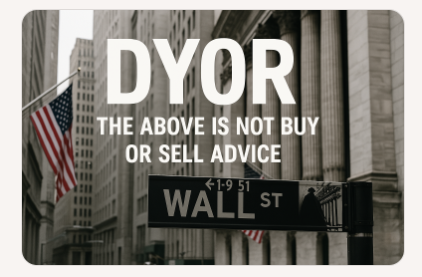
Investors are rushing to buy these three income stocks, but Zaven Boyrazian has spotted some critical weaknesses that make him sceptical.
Posted by
Zaven Boyrazian, CFA
Published 13 September

When investing, your capital is at risk. The value of your investments can go down as well as up and you may get back less than you put in.Read More
The content of this article is provided for information purposes only and is not intended to be, nor does it constitute, any form of personal advice. Investments in a currency other than sterling are exposed to currency exchange risk. Currency exchange rates are constantly changing, which may affect the value of the investment in sterling terms. You could lose money in sterling even if the stock price rises in the currency of origin. Stocks listed on overseas exchanges may be subject to additional dealing and exchange rate charges, and may have other tax implications, and may not provide the same, or any, regulatory protection as in the UK.
You’re reading a free article with opinions that may differ from The Motley Fool’s Premium Investing Services.
The FTSE 100 is packed with a wide range of income stocks, some of which are offering pretty tasty-looking yields right now. Sadly, not all of these dividend-paying shares will be winning investments. And after taking a look at some of the most popular picks among investors over the last month, there are three that I’m personally steering clear of.
According to AJ Bell, Legal & General (LSE:LGEN) and Aviva (LSE:AV.) are both among the most popular income stocks to buy right now. And it’s not too difficult to understand why.
These insurance giants currently offer a 9.2% and 5.6% dividend yield. Looking at their latest results, both have delivered higher operating profits across their increasingly diversified portfolios of financial products. And since that has, in turn, generated recurring cash flows, both businesses are on a bit of a dividend hiking streak of four and five years, respectively.
But as every experienced investor knows, past performance does not guarantee future results. And the shifting macroeconomic landscape in the UK is starting to create headwinds that could potentially compromise dividends.
My top concern is the state of UK gilts. Both insurance groups have large portions of their investment portfolios tied up in government bonds. As such, they’re highly sensitive to sudden movements in gilt yields, which have recently spiked to multi-decade highs on the back of growing fiscal policy concerns.
Rising gilt yields mean falling bond prices, which can create enormous problems for liability-driven investing strategies and pension risk transfers – something that both Legal & General and Aviva use to generate earnings. Put simply, if yields continue to be volatile, these firms may face a sudden wave of margin calls, triggering balance sheet and liquidity challenges.
That’s why, despite the high dividend yields, the risk surrounding these income stocks is just too high for my tastes.
Another popular pick right now is Taylor Wimpey (LSE:TW.). And again, it’s easy to see why investors are rushing to buy. Despite issues with affordability, housing demand in Britain remains exceptionally strong due to shortages. And with over 76,000 plots in the firm’s landbank, the company has ample untapped growth.
Looking at its latest results, Taylor Wimpey has even managed to accelerate its homebuilding efforts by double-digits. As such, home completions are on track to reach between 10,400 and 10,800 by the end of 2025.
So, what’s the problem? Despite operational improvements, the company continues to see its profit margins squeezed. Build cost inflation surrounding raw materials as well as labour continues to be a pest. And when throwing in unpredictable cladding remediation and regulatory settlements, Taylor Wimpey’s profits recently swung firmly into the red.
With fewer profits to spare, dividends are no longer covered by earnings. That’s fine if profits are able to rebound in the short term. But if not, management may be forced to cut shareholder payouts. And with mortgage rates ticking back up due to the previously mentioned fiscal and economic environment, Taylor Wimpey may struggle to find buyers for all its newly completed homes.
That’s why, despite the tempting 9.6% dividend yield, I’m not tempted to buy this popular income stock.

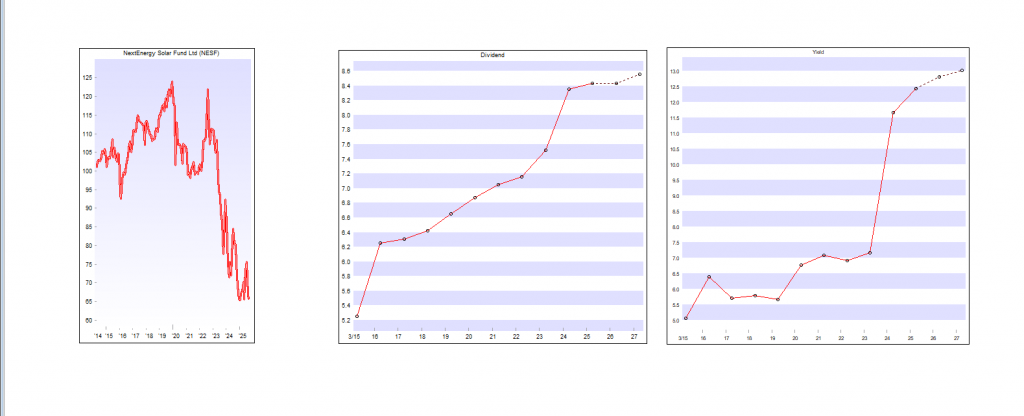
Analysis
Let’s assume you bought some shares when it was 100p. You could have booked some profit with the intention of buying back if the share price fell but for this analysis we will assume you just held and re-invested the dividends back into your Snowball. Your one share would be worth 65p a loss of capital of 35p and you need to allow for inflation. Your analysis of the share has turned out to be wrong.
But you have earned dividends of 62p, the current dividend is
Dividend:
· Total dividends declared of 2.10p per Ordinary Share for the Q1 period ended 30 June 2025 (30 June 2024: 2.10p), in line with full-year dividend target.
· Full-year dividend target guidance for the year ending 31 March 2026 remains at 8.43p per Ordinary Share (31 March 2025: 8.43p).
· The full year dividend target per Ordinary Share is forecast to be covered in a range of 1.1x – 1.3x by earnings post-debt amortisation.
· Since inception the Company has declared total Ordinary Share dividends of £407m.
· As at 20 August 2025, the Company offers an attractive dividend yield of c.11%.
In 5 years time you will have achieved the holy grail of investing that you will have a share providing income at a zero, zilch, cost. Also you have re-invested the income back into your portfolio which is earning you more income to re-invest into your Snowball.
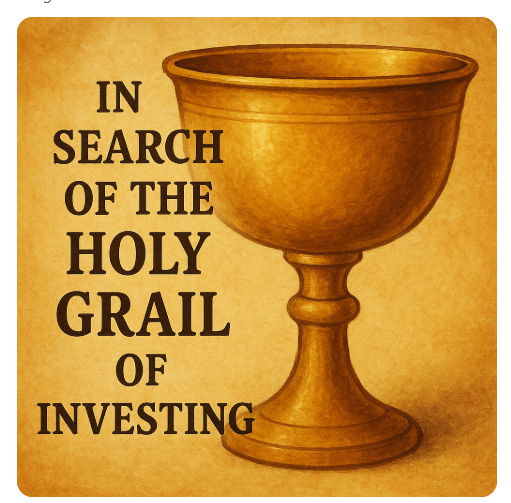
Firms to exit the FTSE 250 are online retailer Asos, auction market operator Auction Technology Group, Bloomsbury Publishing and housebuilder Crest Nicholson Holdings. Solar investor NextEnergy Solar Fund

Even though your analysis turned out to be wrong but by trading a belt and braces strategy you are still growing your retirement Snowball.
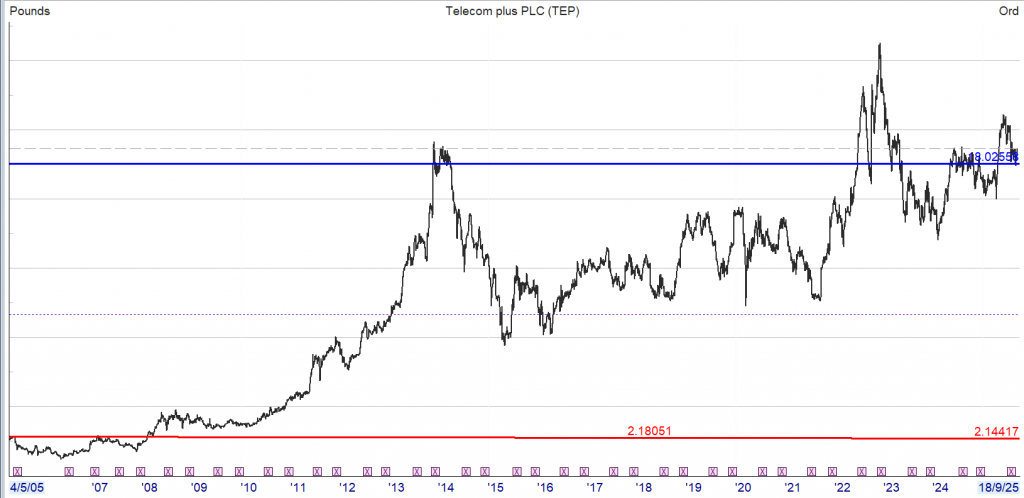
Telecom Plus has paid me more than £500,000 in 20 years just in dividends !
The Naked Trader
The power of long term investing, better if the share price is rising but if not the dividends earned can be re-invested back into your portfolio.

© 2025 Passive Income Live
Theme by Anders Noren — Up ↑